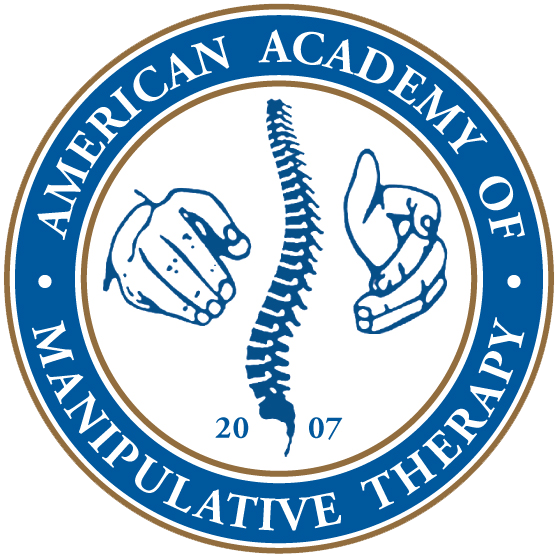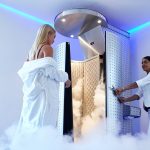Dry Needling in Patients with Multiple Sclerosis: Neurophysiological Changes & Pain Management
Multiple sclerosis (MS) is the most common autoimmune disease affecting the central nervous system, resulting in damage of the myelin sheaths that insulate axons in the brain and spinal cord.1 While physical therapy is considered key to maintaining strength, function and quality of life in patients that suffer from MS, the National MS Society reports that up to 25% of patients with MS have also sought acupuncture for their symptoms, with 10-15% reporting significant relief.2 A 2017 study found that acupuncture delays the duration and number of exacerbations in patients with relapsing-remitting MS.3 Acupuncture has also been linked to improved pain4 and function5 in patients with MS3 and has been shown to provide relief for MS related issues such as spasticity, numbness, tingling, bladder control and depression.3
ACUPUNCTURE VS. DRY NEEDLING
The terminology, theoretical constructs and philosophies may differ; however, dry needling and acupuncture overlap in terms of needling technique with the use of thin monofilament needles.6 Notably, several previous meta-analyses and literature reviews have chosen to consider “acupuncture and dry needling” as one category of interventions.7-11 Therefore, from a procedural and technical perspective, and for the purpose of evaluating and comparing efficacy and effect sizes within the broader literature on the use of needling without injectate in patients with MS published by acupuncturists, Western medical physicians and physical therapists alike, “acupuncture” and “dry needling” will be considered interchangeable terms, and in this context do not rely on diagnoses from Oriental medicine (e.g. bi syndrome, blood stagnation, or kidney yang deficiency12,13) or theoretical movement of qi along traditional Chinese acupuncture meridians.14,15 Importantly, none of the MS studies cited herein used injectate in conjunction with their needling procedure; therefore, all studies fit within the strict definition of dry needling, acupuncture, or “noninjection needling” (as opposed to “injection needling” or “wet needling”), regardless of the differing terminologies, theoretical constructs or philosophies.6,16,17
Given that dry needling was incorrectly classified in 2012 by the American Physical Therapy Association as a treatment exclusively for the deactivation of muscular trigger points in individuals with myofascial pain syndromes18 (i.e. page 2 of the January 2012 Resource Paper19 titled, Physical Therapists & the Performance of Dry Needling defined dry needling as “an invasive technique used by physical therapists (where allowed by state law) to treat myofascial pain that uses a dry needle, without medication or injection, which is inserted into areas of the muscle known as trigger points…”19), it is perhaps worth noting that a number of studies have cautioned against the use of aggressive needling techniques in patients with MS, as they may over stimulate the sympathetic nervous system and initiate an inflammatory cascade, exacerbating the condition.20,21 For example, deep dry needling with “sparrow” pecking (i.e. repeated pistoning) into the lumbar multifidus, gluteus maximus, gluteus medius, gluteus minimus and upper trapezius was found to increase weakness and fecal incontinence in a patient with MS.20
THE IMMUNE SYSTEM & DEMYELINATION
A number of studies have used electroacupuncture in animal models to help alter immune processes and factors of inflammation related to MS. According to a 2007 systematic review, experimental evidence from both the lab and clinic found that electroacupuncture inhibits macrophage activation and production of inflammatory cytokines such as tumor necrosis factor (TNF), interleukin-1beta, interleukin-6 and interleukin-18.22 Moreover, previous studies have demonstrated an improvement in the quantitative and qualitative regulation of leukocytes in peripheral blood following electroacupuncture.22,23 Kim et al. reported a significant reduction of inflammatory cells and CD4+ T cells in rats with experimental autoimmune encephalitis, a model of MS, following acupuncture which correlated with a reduction of onset and duration of paralysis.24 Like autoimmune encephalitis, CD4+ T cells play an important role in the pathogenesis of MS, as they contribute to central nervous system demyelination.25 Notably, Quispe-Canamillas et al. provided 30 minutes of electroacupuncture once per week for 6 months to patients suffering from relapsing-remitting MS at acupoints known to influence the immune system (i.e. ST36, SP6, LI4, and Yintang, bilaterally), resulting in improvement in function, pain and depression.26 Thus, electroacupuncture may be able stimulate the immune system while reducing the actions of inflammatory CD4+ T cells in patients with MS.
REMYELINATION
Electroacupuncture of the governing vessel (GV) points has also been shown to alleviate secondary damage following spinal cord injuries in animal models.27-30 While GV dysfunction is typically associated with spinal cord injury in traditional Chinese medicine,28 Huang et al. reported increased oligodendrocyte precursor cells and neurotrophin-3 (NT-3), following 13 treatments of electroacupuncture at GV6 and GV9 (1 treatment every other day), resulting in a greater number and differentiation of endogenous oligodendrocyte precursor cells, remyelination and improvements in function in rats with demyelinated spinal cord compared to sham.30 In a 2015 study, NT-3 and TrkC gene modified, mesenchymal stem cells were grafted into demyelinated rat spinal cords and then given 13 treatments of electroacupuncture at GV6 and GV9 (1 treatment every other day).28 The treatment led to greater oligodendrocyte precursor cells, oligodendrocyte-like cells and myelin basic protein that correlated with improved cortical evoked potentials and functional improvements.28 These findings are particularly noteworthy, as oligodendrocytes are a type of neuroglia responsible for myelinating axons in the central nervous system,31 and NT-3 has been shown to support oligodendrocyte development.28 In the most recent study on this topic, Zhu et al. (2016) inserted needles at GV 20 and GV9 into an animal model of multiple sclerosis and reported an improved clearance of myelin debris, which has been shown to be detrimental to remyelination. In addition, the electroacupuncture supported greater remyelination in the corpus callosum, which correlated with improve neurobehavioral function.32
PERIPHERAL NERVE STIMULATION
The stimulation of peripheral nerves via electroacupuncture may result in pathoanatomical and neurophysiological changes in the spine that may be useful for patients suffering from MS.15-16 A 2015 study found that deep electroacupuncture in the vicinity of the sciatic nerve (i.e. GB30) in rats that had suffered a severed sciatic nerve resulted in inhibition of JNK signaling in the lumbar spine, reducing apoptosis of spinal neurons.33 A 2012 study performed electroacupuncture at GB30 and Ex-B05 in rats following a spinal cord injury at T8-T9.34 The authors found that electroacupuncture promoted endogenous neural stem cells and oligodendrocytes 15 mm from the center of lesion. Thus, the stimulation of peripheral nerves via electroacupuncture may also promote better recovery of central nervous system lesions in individuals with MS.34
Nevertheless, in a review of the evidence for the use of acupuncture in patients with MS, Karpatkin et al concluded that most studies had inadequate randomization, incomplete blinding, and weak statistical analyses.35
CONCLUSION
Although electroacupuncture has shown promising neurophysiological effects in animal models and has become an increasingly popular treatment option for patients suffering from the symptoms associated with MS,36 more high-quality randomized controlled trials are necessary to fully assess the efficacy of this intervention in the long term.
AUTHORS
Raymond Butts, DPT, PhD, MSc (NeuroSci), MAACP (UK), Dip. Osteopractic
Senior Instructor, American Academy of Manipulative Therapy
Senior Faculty, AAMT Fellowship in Orthopaedic Manual Physical Therapy
Atlanta, GA
James Dunning, DPT, MSc (Manip Ther), MAACP (UK), FAAOMPT, Dip. Osteopractic
Senior Instructor, American Academy of Manipulative Therapy
Director, AAMT Fellowship in Orthopaedic Manual Physical Therapy
Montgomery, AL
REFERENCES
- Berer K, Krishnamoorthy G. Microbial view of central nervous system autoimmunity. FEBS Lett. 2014;588(22):4207-4213.
- “Acupuncture and MS: The Basic Facts.”National MS Society. Web. May 10, 2016.
- Wang C, Chen Z, Wang L, et al. [Relapsing-remitting multiple sclerosis at remission stage treated with acupuncture:a randomized controlled trial]. Zhongguo Zhen Jiu. 2017;37(6):576-580.
- Petrovics G, Ondrejkovicova A. Multiple sclerosis in an acupuncture practice. Neuro Endocrinol Lett. 2017;38(2):87-90.
- Criado MB, Santos MJ, Machado J, Goncalves AM, Greten HJ. Effects of Acupuncture on Gait of Patients with Multiple Sclerosis. J Altern Complement Med. 2017;23(11):852-857.
- Zhou K, Ma Y, Brogan MS. Dry needling versus acupuncture: the ongoing debate. Acupunct Med. 2015;33(6):485-490.
- Furlan AD, van Tulder M, Cherkin D, et al. Acupuncture and dry-needling for low back pain: an updated systematic review within the framework of the cochrane collaboration. Spine (Phila Pa 1976). 2005;30(8):944-963.
- Furlan AD, van Tulder MW, Cherkin DC, et al. Acupuncture and dry-needling for low back pain. Cochrane Database Syst Rev. 2005(1):CD001351.
- Tough EA, White A. Effectiveness of acupuncture/dry needling for myofascial trigger point pain–a systematic review. Physical therapy reviews. 2011;16(2):147-154.
- Tough EA, White AR, Cummings TM, Richards SH, Campbell JL. Acupuncture and dry needling in the management of myofascial trigger point pain: a systematic review and meta-analysis of randomised controlled trials. Eur J Pain. 2009;13(1):3-10.
- Rathnayake T. Back pain (low): acupuncture and dry needling. Evidence Summaries – Joanna Briggs Institute. 2009.
- Brinkhaus B, Witt C, Jena S, et al. Interventions and physican characteristics in a randomized multicenter trial of acupuncture in patients with low-back pain. The Journal of alternative and complementary medicine. 2006;12(7):649-657.
- Moffet H. Traditional acupuncture theories yield null outcomes: a systematic review of clinical trials. Journal of clinical epidemiology. 2008;61:741-747.
- Deadman P, Al-Khafaji M, Baker K. A manual of acupuncture. 2nd ed. Hove, East Sussex, UK: Journal of Chinese Medicine Publications; 2011.
- O’Conner J, Bensky D. Acupuncture: a comprehensive text. Seattle, WA: Eastland Press; 1981.
- Casanueva B, Rivas P, Rodero B, Quintial C, Llorca J, Gonzalez-Gay MA. Short-term improvement following dry needle stimulation of tender points in fibromyalgia. Rheumatol Int. 2013.
- Dunning J, Butts R, Mourad F, Young I, Flannagan S, Perreault T. Dry needling: a literature review with implications for clinical practice guidelines. Phys Ther Rev. 2014;19(4):252-265.
- Dunning J, Butts R, Mourad F, Young I, Flannagan S, Perreault T. Dry needling: a literature review with implications for clinical practice guidelines. Phys Ther Rev. 2014;19(4):252-265.
- APTA. Physical Therapists & the Performance of Dry Needling: an Educational Resourse Paper. Alexandria, VA: APTA Department of Practice and APTA State Government Affairs; 2012.
- McDowell J, Kohut S, Johnson G. Trigger Point Acupuncture (Dry Needling) and Associated Fecal Incontinence in Multiple Sclerosis: A Case Report. Medical Acupuncture. 2015;27(4):1-5.
- Mann F. Reinventing Acupuncture. A New Concept of Ancient Medicine. Oxford: Butterworth Heinemann; 1992.
- Kavoussi B, Ross BE. The neuroimmune basis of anti-inflammatory acupuncture. Integr Cancer Ther. 2007;6(3):251-257.
- Chitnis T. The role of CD4 T cells in the pathogenesis of multiple sclerosis. Int Rev Neurobiol. 2007;79:43-72.
- Kim KY, Yang WJ, Shin TK, Jeong HJ, Kim HM. Impact of acupuncture by using life-energy (qi) oriental needle on the paralysis of rats with experimental autoimmune encephalomyelitis. Am J Chin Med. 2012;40(4):769-778.
- Legroux L, Arbour N. Multiple Sclerosis and T Lymphocytes: An Entangled Story. J Neuroimmune Pharmacol. 2015;10(4):528-546.
- Quispe-Cabanillas JG, Damasceno A, von Glehn F, Brandão CO, Damasceno BP, Silveira WD, Santos LM. Impact of electroacupuncture on quality of life for patients with Relapsing-Remitting Multiple Sclerosis under treatment with immunomodulators: a randomized study. BMC Complement Altern Med. 2012 Nov 5;12:209.
- Ding Y, Yan Q, Ruan JW, et al. Bone marrow mesenchymal stem cells and electroacupuncture downregulate the inhibitor molecules and promote the axonal regeneration in the transected spinal cord of rats. Cell Transplant. 2011;20(4):475-491.
- Ding Y, Zhang RY, He B, et al. Combination of electroacupuncture and grafted mesenchymal stem cells overexpressing TrkC improves remyelination and function in demyelinated spinal cord of rats. Sci Rep. 2015;5:9133.
- Chen YY, Zhang W, Chen YL, Chen SJ, Dong H, Zeng YS. Electro-acupuncture improves survival and migration of transplanted neural stem cells in injured spinal cord in rats. Acupunct Electrother Res. 2008;33(1-2):19-31.
- Huang SF, Ding Y, Ruan JW, et al. An experimental electro-acupuncture study in treatment of the rat demyelinated spinal cord injury induced by ethidium bromide. Neurosci Res. 2011;70(3):294-304.
- Bradl (2010). “Oligodendrocytes: biology and pathology”. Acta Neuropathol. 119: 37–53.
- Zhu K, Sun J, Kang Z, Zou Z, Wu G, Wang J. Electroacupuncture Promotes Remyelination after Cuprizone Treatment by Enhancing Myelin Debris Clearance. Front Neurosci. 2016;10:613.
- Liu XT, Tao X, Ma TM, et al. [Effect of Electroacupuncture Stimulation of Different Tissues at “Huantiao” (GB 30) Acupoint on Expression of Phosphorylated JNK and c-jun in Spinal Cord of Rats with Sciatic Nerve Injury]. Zhen Ci Yan Jiu. 2015;40(5):373-377.
- Wu H, Hu M, Yuan D, et al. Electroacupuncture promotes the proliferation of endogenous neural stem cells and oligodendrocytes in the injured spinal cord of adult rats. Neural Regen Res. 2012;7(15):1138-1144.
- Karpatkin HI, Napolione D, Siminovich-Blok B. Acupuncture and multiple sclerosis: a review of the evidence. Evid Based Complement Alternat Med. 2014;2014:972935.
- Kim S, Chang L, Weinstock-Guttman B, et al. Complementary and Alternative Medicine Usage by Multiple Sclerosis Patients: Results from a Prospective Clinical Study. J Altern Complement Med. 2018.







